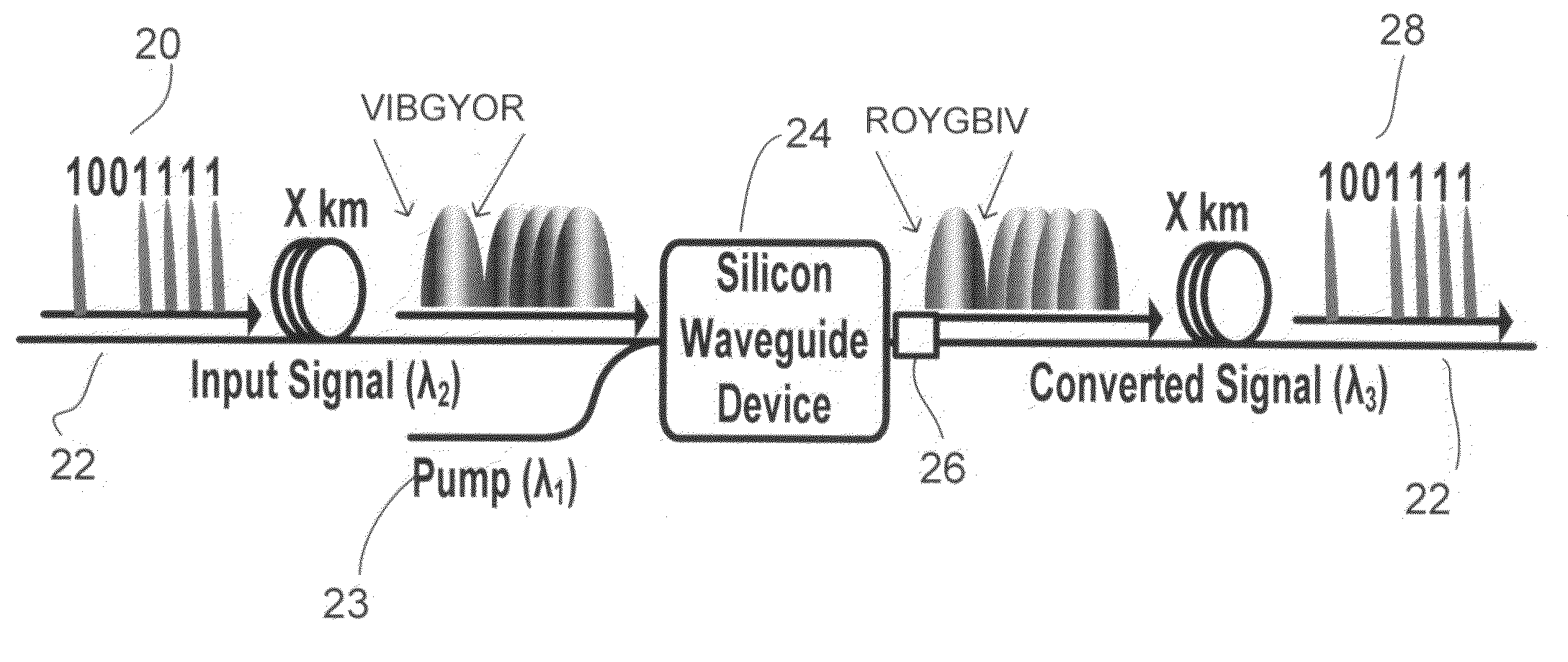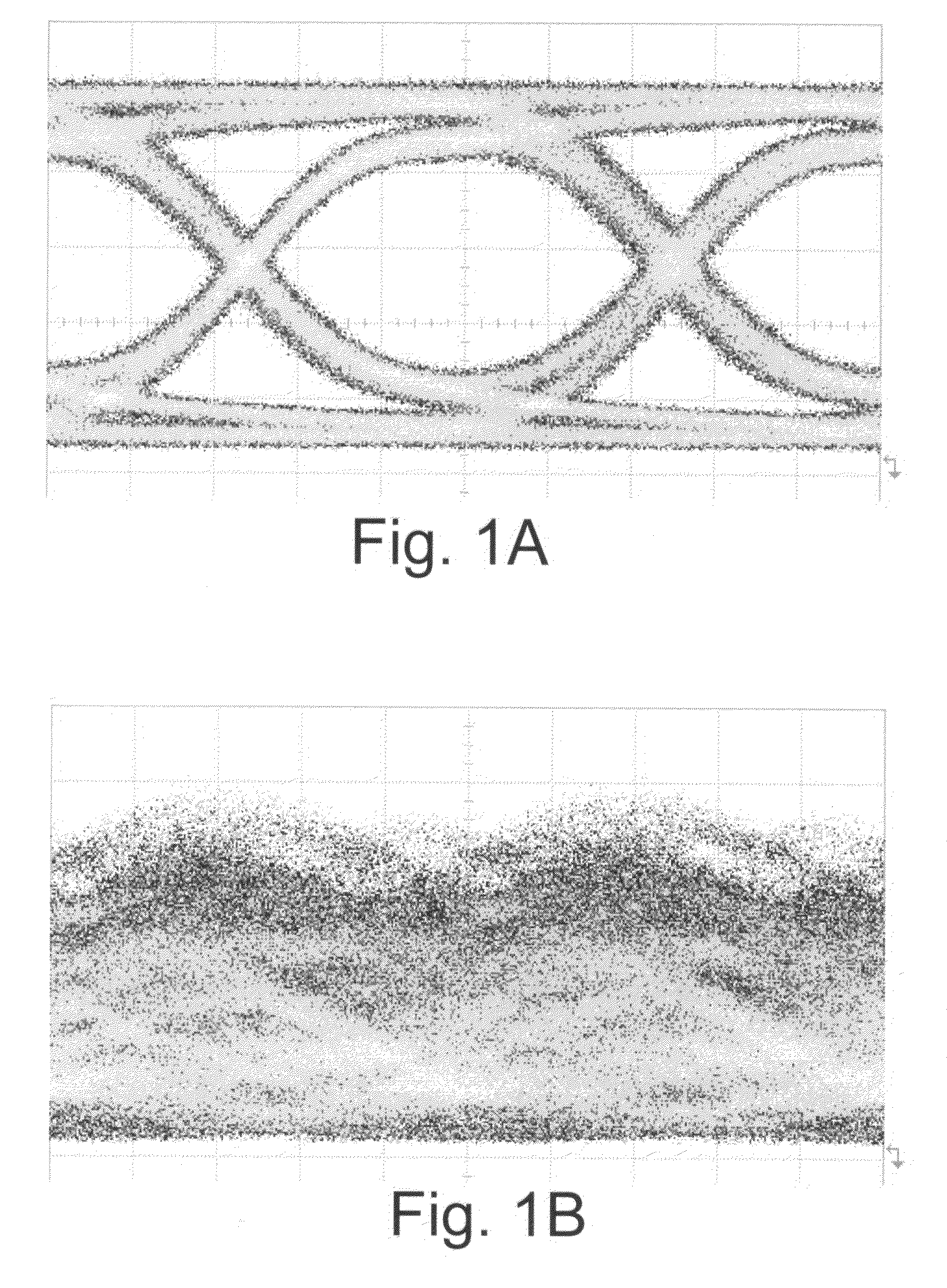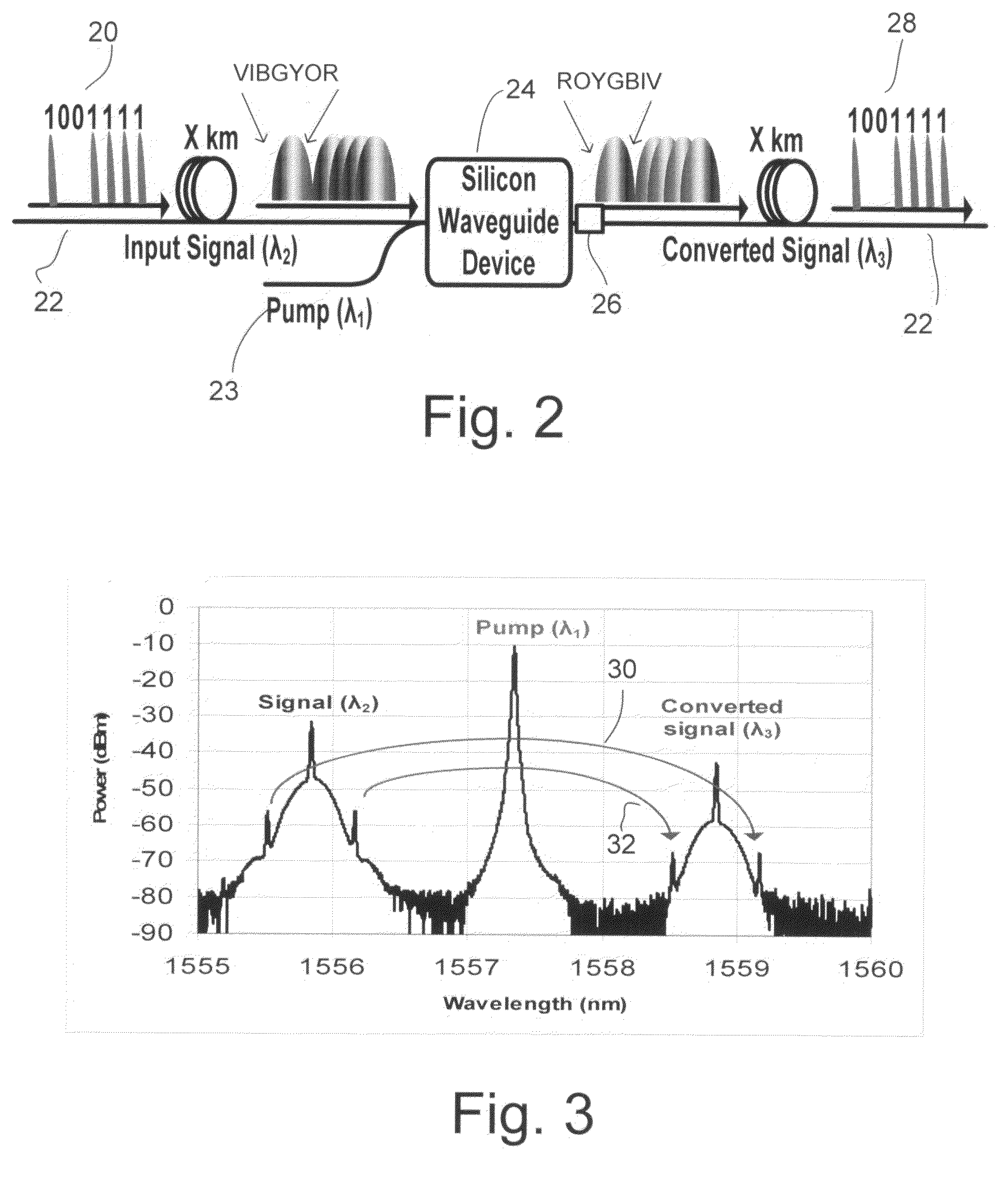Silicon waveguide dispersion compensator using optical phase conjugation
a phase conjugation and optical phase technology, applied in the field of optical communication, can solve the problems of reducing the transmission speed and distance, and affecting the transmission quality of signals,
- Summary
- Abstract
- Description
- Claims
- Application Information
AI Technical Summary
Problems solved by technology
Method used
Image
Examples
Embodiment Construction
[0016]In the absence of using any chromatic dispersion compensation technique, it may be difficult to detect the transmitted data over long distances at very high data rates (i.e. >>10 Gb / s) at the receiving end. Embodiments utilize the optical phase conjugation (OPC) property in silicon waveguides to compensate chromatic dispersion effect in optical fibers. This enables high-speed optical data to propagate over long distance as for example in metro and long haul communication networks. In one embodiment the silicon based OPC may be placed near the middle of an optical link (or mid-span) to realize chromatic dispersion compensation.
[0017]The OPC function may be achieved through four-wave mixing (FWM), a nonlinear optical effect in silicon. Referring now to FIG. 2, there is shown a block diagram of an optical transmission link. An input signal centered at wavelength λ2 comprises data 20 launched down a fiber 22. The fiber may have a length of X km, where X may be for example on the o...
PUM
 Login to View More
Login to View More Abstract
Description
Claims
Application Information
 Login to View More
Login to View More - R&D
- Intellectual Property
- Life Sciences
- Materials
- Tech Scout
- Unparalleled Data Quality
- Higher Quality Content
- 60% Fewer Hallucinations
Browse by: Latest US Patents, China's latest patents, Technical Efficacy Thesaurus, Application Domain, Technology Topic, Popular Technical Reports.
© 2025 PatSnap. All rights reserved.Legal|Privacy policy|Modern Slavery Act Transparency Statement|Sitemap|About US| Contact US: help@patsnap.com



